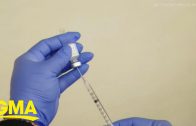Ten scientific reasons in support of airborne transmission of SARS-CoV-2
This conclusion, and the wide circulation of the review’s findings, is concerning because of the public health implications.
Airborne transmission of respiratory viruses is difficult to demonstrate directly.
Mixed findings from studies that seek to detect viable pathogen in air are therefore insufficient grounds for concluding that a pathogen is not airborne if the totality of scientific evidence indicates otherwise. Decades of painstaking research, which did not include capturing live pathogens in the air, showed that diseases once considered to be spread by droplets are airborne.
Ten streams of evidence collectively support the hypothesis that SARS-CoV-2 is transmitted primarily by the airborne route.
Detailed analyses of human behaviours and interactions, room sizes, ventilation, and other variables in choir concerts, cruise ships, slaughterhouses, care homes, and correctional facilities, among other settings, have shown patterns—eg, long-range transmission and overdispersion of the basic reproduction number (R0), discussed below—consistent with airborne spread of SARS-CoV-2 that cannot be adequately explained by droplets or fomites.
The high incidence of such events strongly suggests the dominance of aerosol transmission.
Historically, it was possible to prove long-range transmission only in the complete absence of community transmission.
supportive of a predominantly airborne mode of transmission. Direct measurements show that speaking produces thousands of aerosol particles and few large droplets,
which supports the airborne route.
and is substantially reduced by indoor ventilation.
Both observations support a predominantly airborne route of transmission.
Viable SARS-CoV-2 was identified in air samples from rooms occupied by COVID-19 patients in the absence of aerosol-generating health-care procedures
and in air samples from an infected person’s car.
Although other studies have failed to capture viable SARS-CoV-2 in air samples, this is to be expected. Sampling of airborne virus is technically challenging for several reasons, including limited effectiveness of some sampling methods for collecting fine particles, viral dehydration during collection, viral damage due to impact forces (leading to loss of viability), reaerosolisation of virus during collection, and viral retention in the sampling equipment.
Measles and tuberculosis, two primarily airborne diseases, have never been cultivated from room air.
Individual and environmental variation means that a minority of primary cases (notably, individuals shedding high levels of virus in indoor, crowded settings with poor ventilation) account for a majority of secondary infections, which is supported by high-quality contact tracing data from several countries.
,
Wide variation in respiratory viral load of SARS-CoV-2 counters arguments that SARS-CoV-2 cannot be airborne because the virus has a lower R0 (estimated at around 2·5)
than measles (estimated at around 15),
especially since R0, which is an average, does not account for the fact that only a minority of infectious individuals shed high amounts of virus. Overdispersion of R0 is well documented in COVID-19.
,
Ease of infection between people in close proximity to each other has been cited as proof of respiratory droplet transmission of SARS-CoV-2. However, close-proximity transmission in most cases along with distant infection for a few when sharing air is more likely to be explained by dilution of exhaled aerosols with distance from an infected person.
The flawed assumption that transmission through close proximity implies large respiratory droplets or fomites was historically used for decades to deny the airborne transmission of tuberculosis and measles.
,
This became medical dogma, ignoring direct measurements of aerosols and droplets which reveal flaws such as the overwhelming number of aerosols produced in respiratory activities and the arbitrary boundary in particle size of 5 μm between aerosols and droplets, instead of the correct boundary of 100 μm.
,
It is sometimes argued that since respiratory droplets are larger than aerosols, they must contain more viruses. However, in diseases where pathogen concentrations have been quantified by particle size, smaller aerosols showed higher pathogen concentrations than droplets when both were measured.












